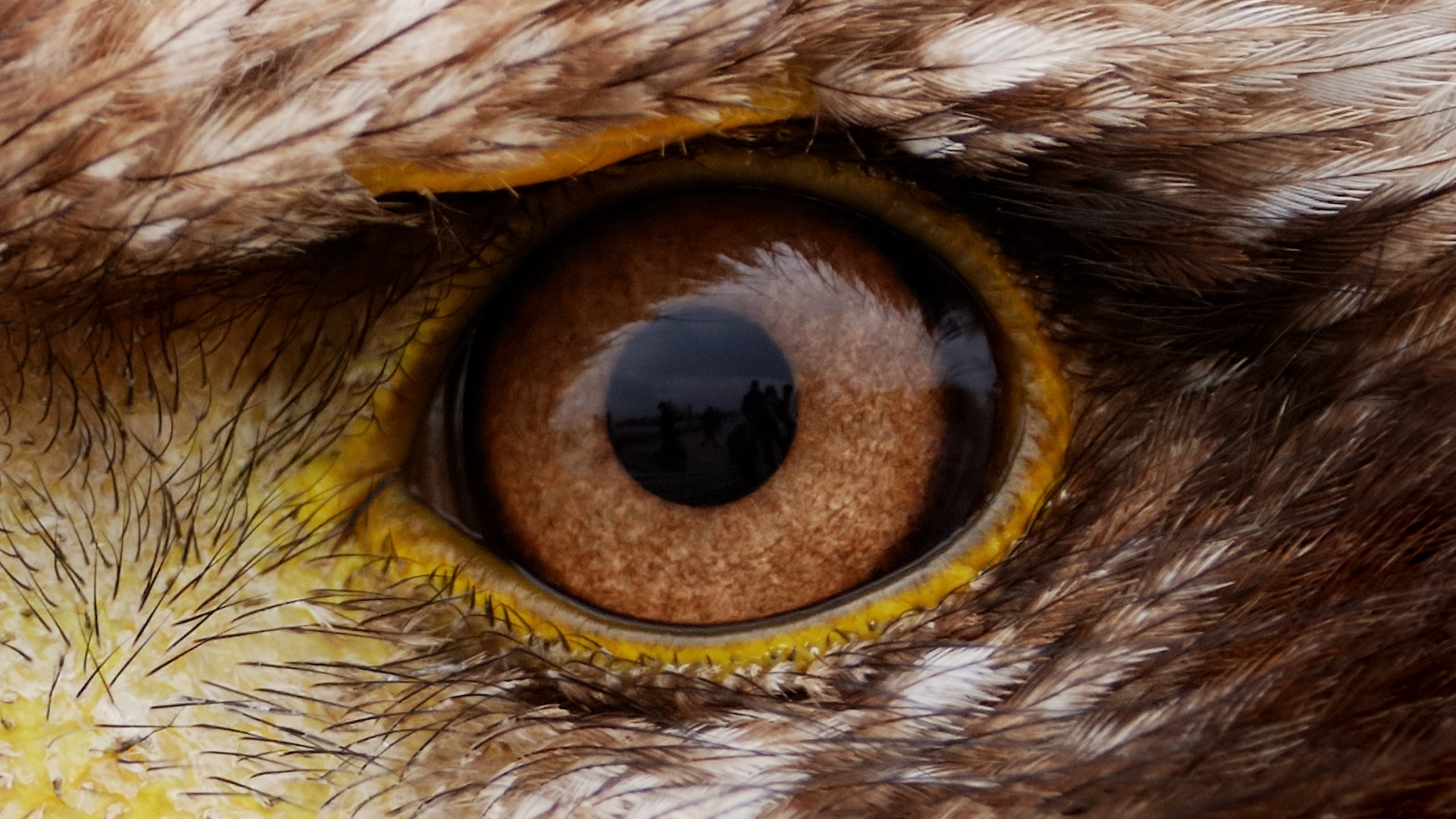
Imagine you’re a red-tailed hawk, soaring through the sky. You scan the ground, looking for your next meal. You spot a squirrel hundreds of feet below you. Its coat helps it blend into the ground, but its camouflage is no match for your sharp eyesight.
Birds of prey — such as hawks, eagles and falcons — are known for their hyperfocused vision. But you might wonder if these birds really come out on top, or if other animals have even more impressive eyesight.
So, what animal has the best vision?
In reality, there’s no easy answer — but there are certainly some standouts.
“There is no perfect visual system,” Esteban Fernandez-Juricic, a professor of biological sciences at Purdue University, told Live Science. He explained that from an evolutionary perspective, the development of advanced visual systems is extraordinarily costly. That’s because eyes are a big component of the nervous system, which needs a lot of energy. To keep things efficient, evolution drives animals to develop only the visual systems they need for their environment and behavior.
Most detailed vision: raptors
Raptors such as eagles, hawks and falcons have a reputation for having great vision, and that reputation is well-earned. These birds need to detect food from very far distances — sometimes even miles away. To do this, their visual systems evolved to prioritize extremely high-resolution vision.
According to Thomas Cronin, a professor of biological sciences at the University of Maryland, Baltimore County, raptor vision is about three to five times more detailed than humans’, so having eagle eyes would feel like looking through a pair of binoculars.
Related: How do migrating birds know where they’re going?
These birds have two adaptations that help them see clearly. First, their eyes are bigger relative to their body size. Second, they pack more photoreceptors — the specialized cells in the retina that detect light — into their eyes. Taken together, these traits help raptors spot prey from far away.
Most colorful vision: mantis shrimp
When it comes to color vision in the animal kingdom, there’s a clear winner: the mantis shrimp. These alien-looking invertebrates live in shallow ocean waters, and they may be able to see colors we can’t even comprehend.
To understand how mantis shrimp see the world, it’s important to know how color vision works. Humans have three types of photoreceptor cells that detect different wavelengths of light, roughly corresponding to red, blue and green. Many vertebrates have four types of photoreceptors, meaning our color vision is worse than that of many other species.
“Most other animals have better color vision than we do,” said Justin Marshall, a professor emeritus at the University of Queensland in Australia with a specialty in marine animal eye and brain structure and function. “We’re comparatively colorblind monkeys.”
Mantis shrimp have an even more staggering number of photoreceptors, though. According to Marshall, these crustaceans boast 12 types of color photoreceptors. Some of those receptors are even tuned to detect light in the ultraviolet range, likely making the world of the mantis shrimp look very different from our own. Mantis shrimp also have special photoreceptors that can detect the polarization of light — a feature of light waves that derives from how sunlight scatters through Earth’s atmosphere.
But it’s not clear exactly how the mantis shrimp brain processes all of this information. Their brains may be picking up on patterns of color combinations rather than detecting individual inputs from photoreceptors.
“They’re probably not trying to see four times as much color as us — they’re just decoding the information in a different way,” Marshall explained.
Fastest vision: insects
Our vision may feel like a continuous stream, but there’s a limit to how quickly our eyes and brains can process information. According to Cronin, humans see at a rate of about 60 frames per second. Our creepy-crawly friends, on the other hand, can pack in much more visual information over the same period.
The visual systems of most insects can capture hundreds of frames per second. That’s so fast that fluorescent lights — which flicker at or below the perceptible rate for human vision — would look like strobe lights to them.
“If a fly were to fly into a movie theater, it would just think it’s watching a really fast slideshow,” Cronin explained.
This ultra-high-speed vision is why it’s so hard to swat a fly; they literally see us coming before we do. Flies accomplish this because their bodies are so tiny that the electrical signals between their eyes and brain have a much smaller distance to travel, meaning they process visual inputs much more quickly.
The trade-offs
All of these specialized visual systems are impressive in their own ways, but they also come with compromises. For example, both mantis shrimp and insects have compound eyes, which are made up of distinct subunits. There are only so many subunits that can fit, so these animals’ vision is much lower-resolution than ours, like a pixelated photo.
With these trade-offs in mind, human eyes are adequate, according to Cronin.
“People are a pretty good compromise,” he said. “I wouldn’t want to be a mantis shrimp, because my brain would be the size of a small pea. So I’m happy with what I have, to be honest.”
Premium IPTV Experience with line4k
Experience the ultimate entertainment with our premium IPTV service. Watch your favorite channels, movies, and sports events in stunning 4K quality. Enjoy seamless streaming with zero buffering and access to over 10,000+ channels worldwide.
















